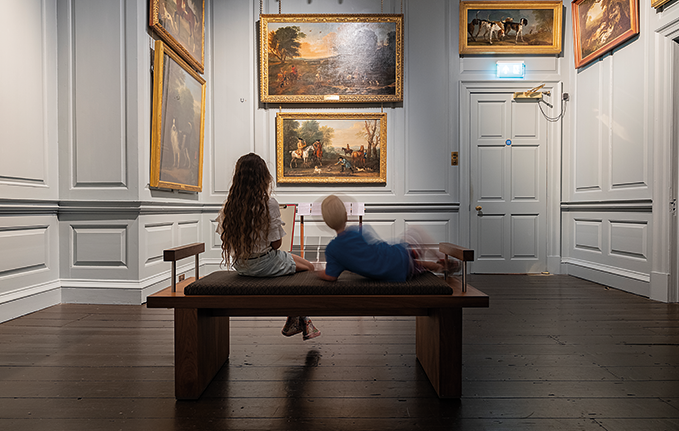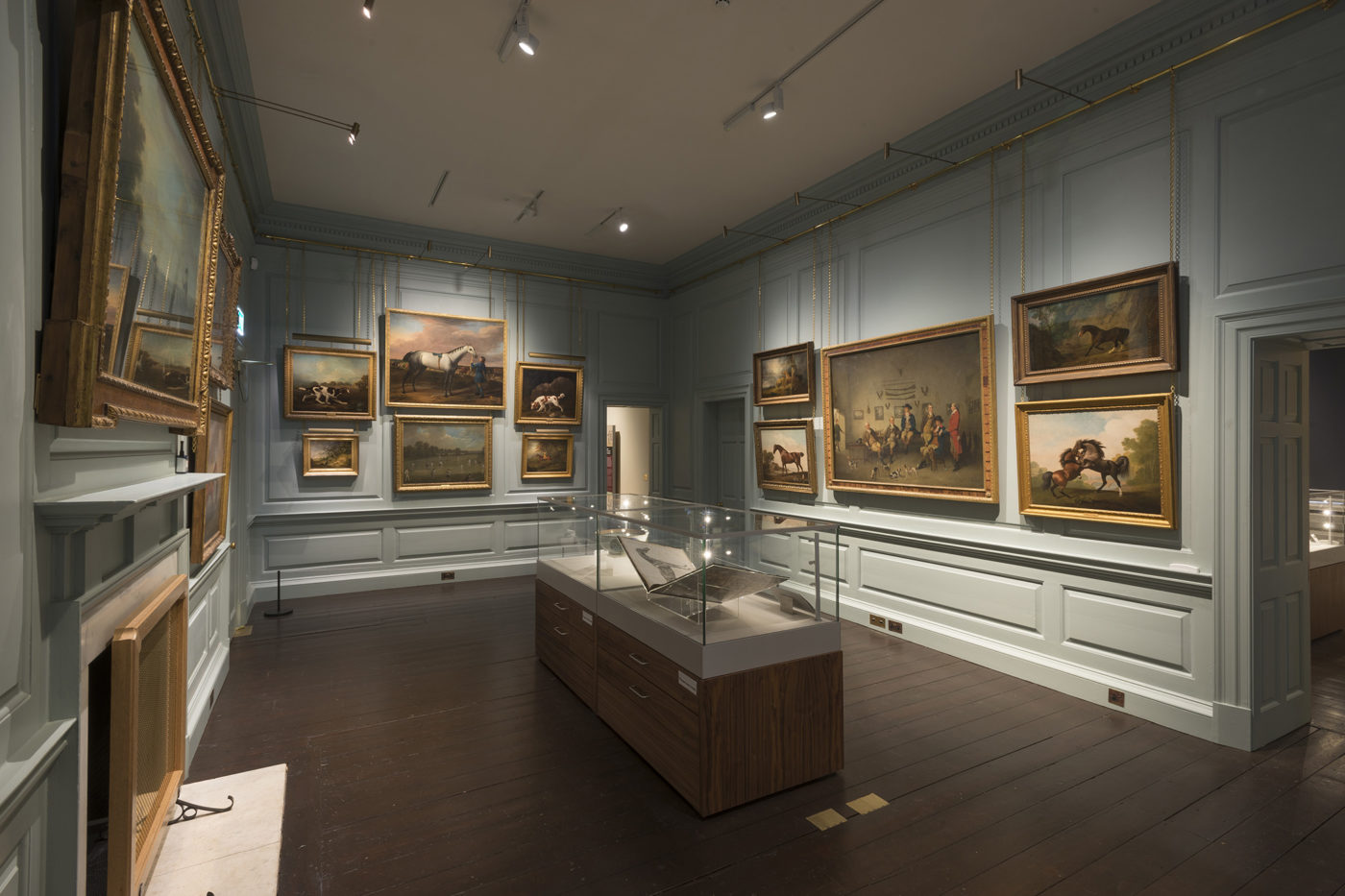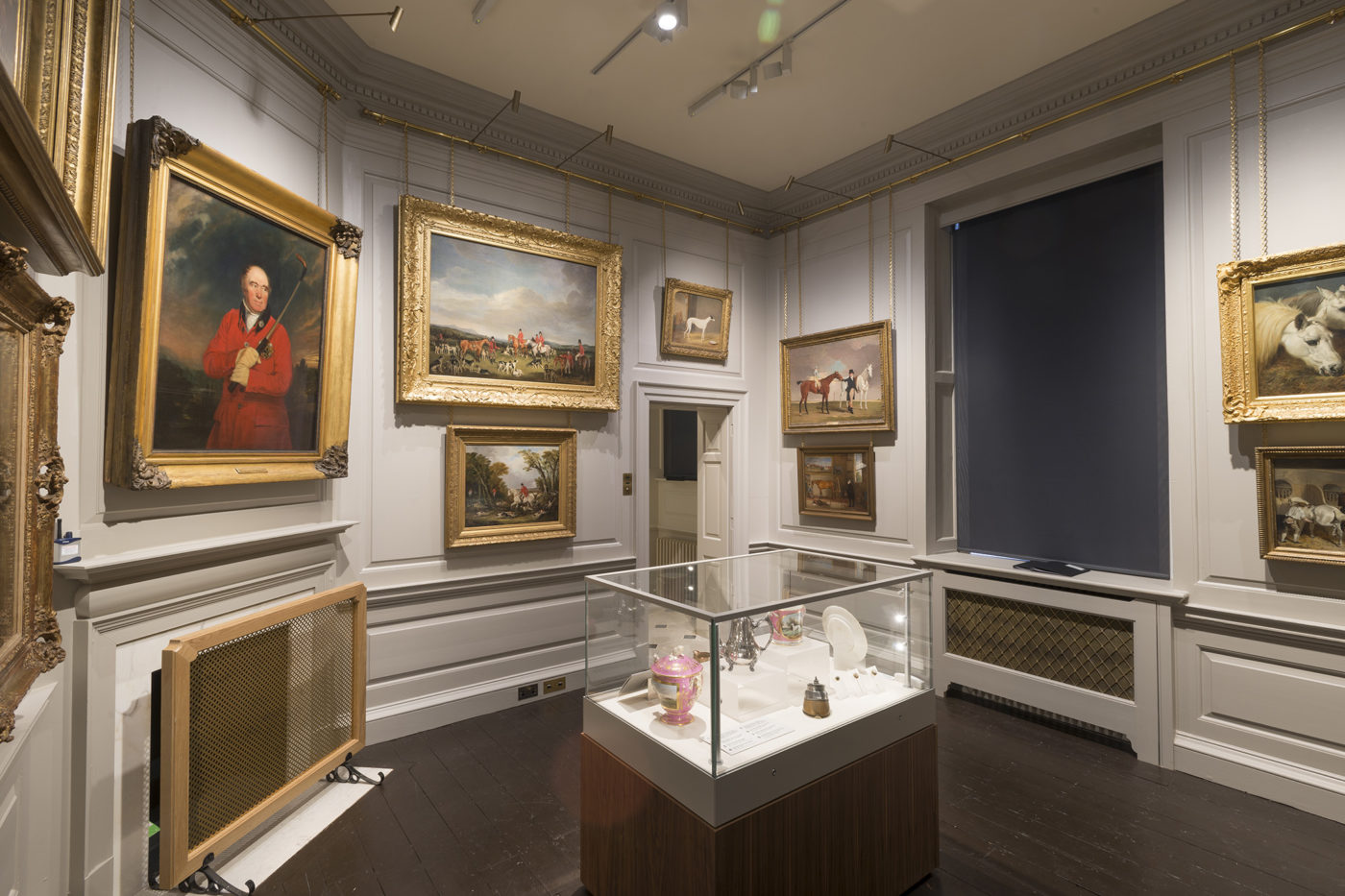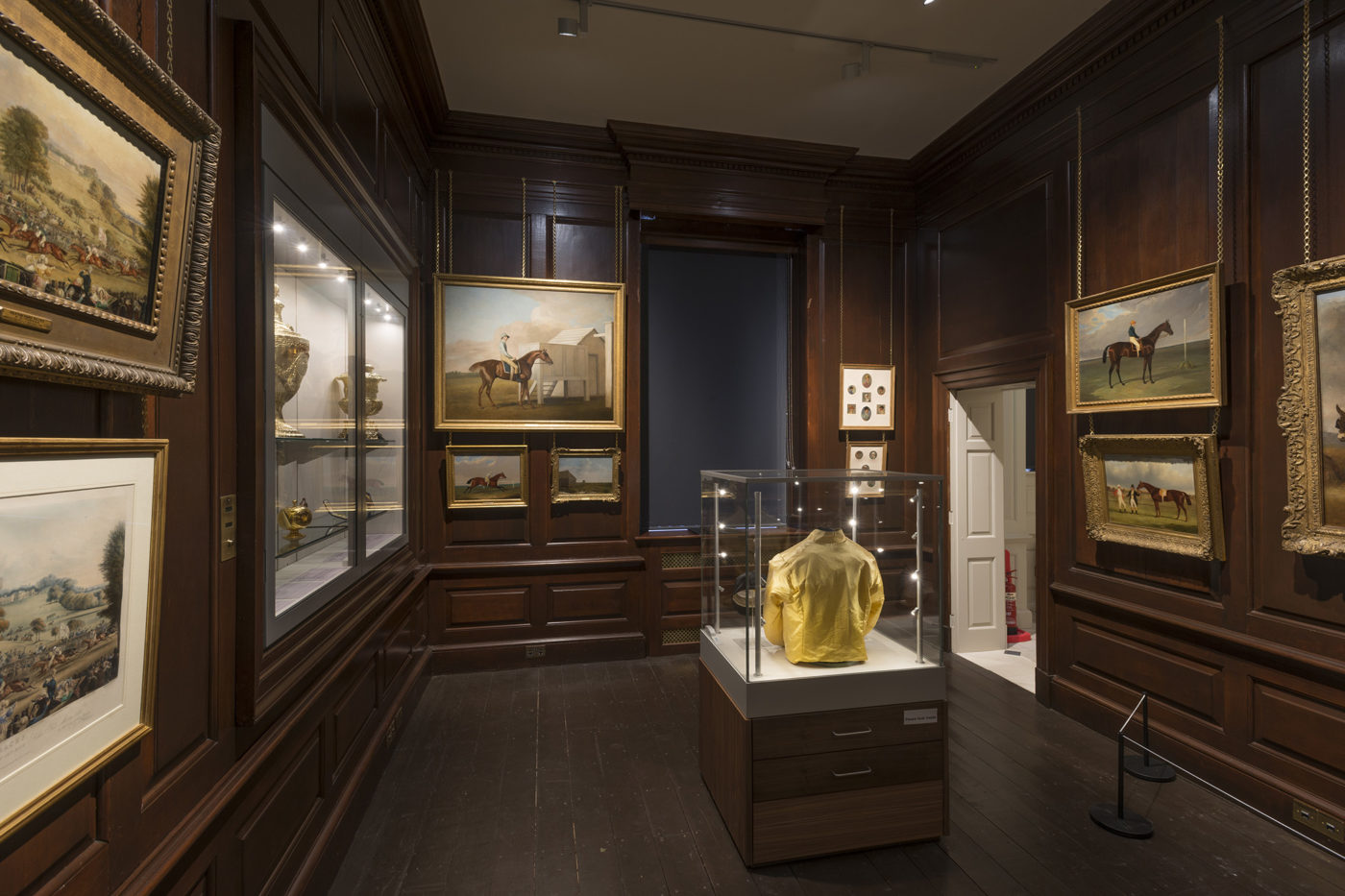Packard Galleries of British Sporting Art
Situated in the remaining element of King Charles II’s racing palace is the Fred Packard Museum and Galleries of British Sporting Art – a home for the British Sporting Art Trust. Palace House is made up of three charities: The National Horseracing Museum, The British Sporting Art Trust and Retraining of Racehorses who have all come together to create this fantastic living museum and world-class visitor attraction in the heart of Newmarket, Suffolk.
Paintings by George Stubbs and Sir Alfred Munnings showcase the finest British sporting art from around the UK.
Images of traditional rural pursuits are joined by some more surprising aspects of the subject – contemporary artwork from Peter Blake and Mark Wallinger. The gallery explores the development of these popular sporting images through paintings, sculpture, print-making and the applied arts.
Significant loans have come from the Tate and Victoria & Albert Museums, along with a number of private and public art collections.
We’re bringing the fascinating story of Palace House to life, with our expert volunteers, offering tours at 3pm every Thursday – tours are included in General Admission.
Palace House
Rothschild Room
The first gallery in Palace House explores 17th century sporting art. Rural sports such as hunting, hawking, shooting and horseracing have been the subject of paintings for hundreds of years. In the 17th century, they were mainly pursuits of the aristocratic and land-owning elite, the traditional patrons of sporting art. Paintings and tapestries of sporting scenes were often commissioned to decorate royal palaces, country houses and hunting lodges.

Palace House
The King's Bedroom
The King’s Bedroom is the second gallery in Palace House and displays work from the 18th century. Huge growth in the popularity of sporting pursuits in the early eighteenth century led to a thriving school of British sporting art. Rural sports, and the art that celebrated them, continued to be a symbol of wealth and status. Sporting patrons wanted artists to capture their successes both in the field and on the racecourse. George Stubbs was a key artist of the period, famed for his naturalistic depictions of horses.

Sign up today to find out about our latest news and offers
Palace House
The King's Sitting Room - a Golden Age
By the end of the 18th century, the rural sporting landscape was changing. Transformed by agriculture, the British countryside was becoming an ideal setting for foxhunting. The introduction of new hedges and fences, erected to enclose the land for farming, created challenging obstacles to be jumped. With ever-improving transport networks, the countryside was becoming more accessible to a wider variety of people. The art of the period captures the broader range of sports that were on offer. The growing popularity of sport in Britain increased the demand for affordable sporting art. Sporting imagery began to appear everywhere, from high art to everyday objects.

Palace House
The Oak Room
Since the reign of Charles II, racing art has captured a sense of the awe and excitement associated with the sport. Early native sporting artists created countless portraits of early champions, celebrating the strength and speed of the thoroughbred racehorse. Later in the century, a new age of scientific discovery and enlightenment shaped the development of equine painting. The pre-eminent sporting artist George Stubbs depicted racehorses with new anatomical precision and influenced a new generation of naturalistic equestrian portraiture.
By the early 19th century, horseracing had developed into a popular public attraction. There was a growing demand for portraits of famous winners or pictures of particular races. Artists began to produce paintings with a view to creating more affordable reproduction engravings. The sport and art of horseracing had become a popular commodity.

